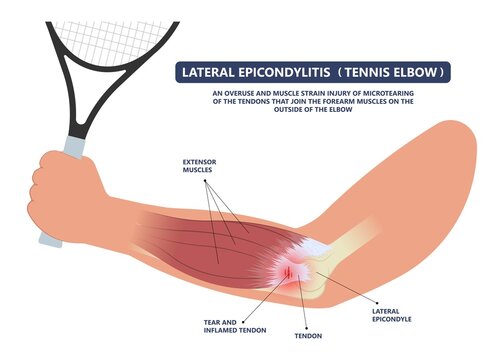Focused Shockwave Therapy
This form of therapy is commonly employed to treat a wider range of musculoskeletal conditions, including chronic tendonitis, plantar fasciitis, calcific shoulder tendinopathy, and more. It is primarily used for pain relief and tissue regeneration in these specific conditions.
Focused Shockwave Therapy (ESWT)



Extracorporeal shock wave therapy (ESWT) is the transcutaneous application of high-energy acoustic waves to break down tissue or to promote healing and repair. Focused ESWT involves the application of acoustic waves transmitted in a narrow or focused pattern. First used in the early 1980s, this type of ESWT emerged as a noninvasive treatment known as lithotripsy to eliminate kidney stones. In the decades that followed the advent of lithotripsy, researchers began to examine other potential clinical applications for focused ESWT and another form of shock wave therapy known as radial ESWT. In contrast to focused ESWT, radial ESWT acoustic waves are transmitted in a more diffuse, radial pattern.
As interest in these modalities grew, researchers began exploring their therapeutic potential. During the 1990s and early 2000s, numerous research teams shared findings suggesting that ESWT could be used as a therapeutic tool. Researchers demonstrated the use of ESWT to reduce pain and promote healing in bone, tendon, ligament, and fascia in patients with musculoskeletal disorders, and to reduce spasticity in patients with neurological disorders.
How Radial ESWT Works
Compressed air accelerates a projectile up to 80 to 90 kph within a guiding tube that strikes a metal applicator placed on the patient's skin. The kinetic energy is converted into a radial shock wave. The projectile generates stress waves in the applicator that transmit pressure waves into tissue to a depth of 4 to 5 cm.
Potential Diagnoses for ESWT
The evolving list of diagnoses for which ESWT shows potential includes:
- Shoulder tendinopathy
- Lateral epicondylosis/epicondylitis
- Greater trochanteric pain syndrome
- Hamstring tendinopathy
- Patellar tendinopathy
- Medial tibial stress syndrome
- Achilles tendinopathy
- Plantar fasciitis
- Knee osteoarthritis
- Fracture nonunion
- Spasticity of spinal and supraspinal origin (stroke, brain injury, multiple sclerosis, cerebral palsy)
Research and Findings
Multiple published studies have examined the use of ESWT in patients with musculoskeletal disorders and spasticity related to neurological diagnoses. A study published in Europa Medicophysica in March 2005 concluded that patients with lateral epicondylitis refractory to conservative care who were treated with radial ESWT experienced a decrease in pain and functional impairment and an increase in the pain-free grip strength test.
A study published in the November 2017 issue of the Journal of Stroke and Cerebrovascular Diseases demonstrated encouraging results when testing the use of ESWT in patients with spasticity related to stroke. ESWT also reduced spasticity related to multiple sclerosis according to studies published in Multiple Sclerosis Journal in April 2015 and Archives of Physical Medicine and Rehabilitation in November 2018.
Adverse Events and Contraindications
According to Dr. Wainberg, the list of adverse effects (AEs) associated with ESWT is fairly short. Mild AEs include transient discomfort, skin erythema, and localized swelling. More-severe but exceptionally rare AEs include Achilles tendon rupture, humeral head osteonecrosis (after focused ESWT) and calcaneal stress-type fracture (presumed after focused ESWT).
Contraindications or situations in which ESWT may be inappropriate include:
- Treatment over air-filled tissue (lung, gut)
- Pregnancy
- Presence of local tumor or infection
- Less than six weeks since local corticosteroid injection
- Age less than 18 (except for patients diagnosed with Osgood-Schlatter disease)
- Treatment of pre-ruptured tendons
- Blood-clotting disorders, including local thrombosis